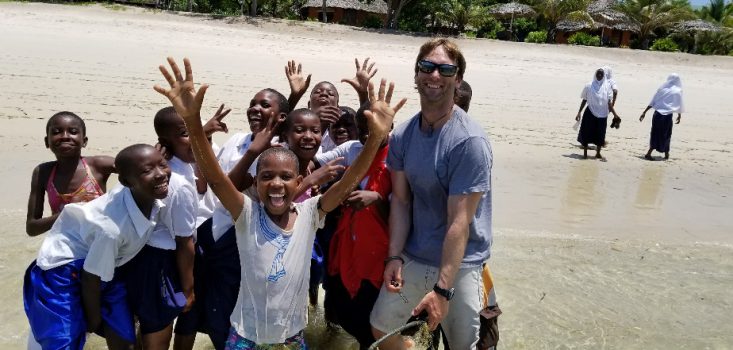The Bertarelli Programme in Marine Science maintains an array of acoustic receivers around four islands of the Chagos Archipelago in the British Indian Ocean Territory. This battery of listening devices picks up signals from tagged animals (mostly reef sharks) as they pass by and helps scientists build up a picture of how these important predators use the Marine Protected Area and interact with each other.
Towards the end of 2016, a huge storm hit the Chagos Archipelago which was strong enough to separate our Vemco VR4 Global buoy from its mooring and push it off into deep water; for the next 11 months, the buoy drifted with the currents towards the east coast of Africa. Scientists at Stanford University plotted the buoy’s course and waited, with the intention of mounting a rescue mission, until it got close enough to land. Finally in July of 2017, the buoy ran aground over 3,500 km away on a reef near the small fishing town of Kilwa Mosoko in Tanzania.
We managed to get in contact with a small local holiday lodge and asked if they could assist in the buoy’s recovery. It took more than six hours – and 17 people – to maneuver the heavy equipment into a hand-made canoe and bring it ashore. Then it was carefully looked after by staff at the Kimbilio Lodge until Taylor Chapple and Robbie Schallert of Stanford University were able to collect it.
We’re very grateful to the people of Kilwa Mosoko. Because of their help and assistance, the buoy will soon be back in the Chagos Archipelago tracking tagged fish so we can better understand the effectiveness of the Marine Protected Area.




